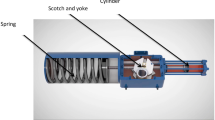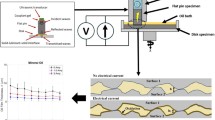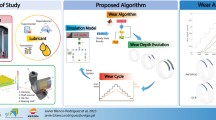Abstract
Pratt & Whitney has accumulated more than three decades of experience with thermal barrier coatings (TBCs). These coatings were originally developed to reduce surface temperatures of combustors of JT8D gas turbine engines to increase the thermal fatigue life of the components. Continual improvements in de-sign, processing, and properties of TBCs have extended their applications to other turbine components, such as vanes, vane platforms, and blades, with attendant increases in performance and component du-rability. Plasma-spray-based generation I (Gen I) combustor TBCs with 7 wt % yttria partially stabilized zirconia deposited by air plasma spray (APS) on an APS NiCoCrAlY bond coat continues to perform ex-tremely well in all product line engines. Durability of this TBC has been further improved in Gen II TBCs for vanes by incorporating low-pressure chamber plasma-sprayed NiCoCrAl Y as a bond coat. The modi-fication has improved TBC durability by a factor of 2.5 and altered the failure mode from a “black fail-ure” within the bond coat to a “white failure” within the ceramic.
Further improvements have been accomplished by instituting a more strain-tolerant ceramic top layer with electron beam/physical vapor deposition (EB-PVD) processing. This Gen III TBC has demonstrated exceptional performance on rotating airfoils in high-thrust-rated engines, improving blade durability by three times through elimination of blade creep, fracture, and rumpling of metallic coatings used for oxi-dation protection of the airfoil surfaces. A TBC durability model for plasma-sprayed as well as EB-PVD systems is proposed that involves the accumulation of compressive stresses during cyclic thermal expo-sure. The model attempts to correlate failure of the various TBCs with elements of their structure and its degradation with thermocyclic exposure.
Similar content being viewed by others
References
S.M. Meier and D.K. Gupta, The Evolution of Thermal Barrier Coat- ings in Gas Turbine Engine Applications,J. Eng. Gas Turbines Power (Trans. ASME), Vol 116, 1994, p 250–257
J.T. DeMasi, M. Ortiz, and K.D. Sheffler, “Thermal Barrier Coating Life Prediction Model Development, Phase I Final Report”, NASA Cr-182230, NASA-Lewis Research Center, 1989
R.A. Miller and C.E. Lowell, Failure Mechanisms of Thermal Barrier Coatings Exposed to Elevated Temperature,Thin Solid Films, Vol 95, 1982, p 265–273
Author information
Authors and Affiliations
Rights and permissions
About this article
Cite this article
Bose, S., DeMasi-Marcin, J. Thermal barrier coating experience in gas turbine engines at Pratt & Whitney. JTST 6, 99–104 (1997). https://doi.org/10.1007/BF02646318
Issue Date:
DOI: https://doi.org/10.1007/BF02646318




